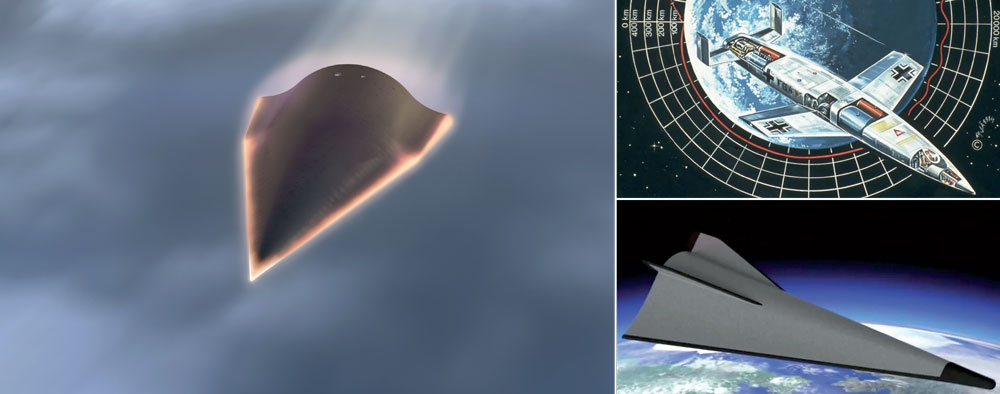DEFENCE Hypersonic glide vehicles
Hypersonic come weapons of age
Over 70 years after it was first envisaged – has Eugen Sänger’s vision of an unstoppable suborbital glide bomber returned with Russia’s Avangard hypersonic glide vehicle? TIM ROBINSON assesses the new high-speed arms race.

Today, in hindsight, it is clear that the Nazi regime in WW2 was pushing the boundaries of aerospace in the quest to develop ‘wonder weapons’ designed to alter the outcome of the war. Jet fighters and ballistic missiles came as a surprise to the Allies but were rapidly adopted by the superpowers throughout the Cold War as key weapon systems.
However, one particular vision of future warfare has waited over 70 years for technology to catch up – that of a long-range hypersonic glide vehicle. Originally conceived by Eugen Sänger, the Silbervogel (Silver Bird) was designed as an unstoppable ultra-long-range suborbital bomber, able to strike the US from Europe by ‘skipping’ in and out of the upper atmosphere. The Silbervogel glider would have been launched from the ground by rocket-powered sled, before engaging its own rockets to climb to an altitude of 90miles and then using the upper atmosphere in a series of ‘skips’ to extend its range – reaching a top speed of Mach 17 during its flight.
Once over its target, it would have dropped an 8,800 lb bomb, before continuing on to land in Japanese Axis-held territory. Immune to countermeasures or interception, the Silbervogel would have had a staggering range of 1924,000km. Fortunately for the Allies, this design for a spaceplane bomber was constrained by the technology of the day, although its concept did go on to inform the US X-20 Dynasoar and Space Shuttle. (There is also speculation in some quarters that the USAF’s secretive X-37B spaceplane also uses atmosphere ‘skipping’ to alter its trajectory and confuse those attempting to track it).
Fast forward 70 plus years to 2019 and a mantra in many defence research activity projects is ‘speed is the new stealth’ as a way to penetrate ever more highly defended airspace and strike time-critical targets from long range. Hypersonic projects are now being fast-tracked around the world. Even the UK, faced with defence budget crises and post-Brexit uncertainty has realised the need to join this race and has committed £10m to investigate advanced hypersonic projects.

 As might be expected – HGVs bring their own challenges – including structural, thermodynamics, control and communications. Three out of four HGV test flights (at least in the ‘white’ unclassified world) by the US have ended in failure. It remains unknown how many failures Russian and China have encountered along the way.
As might be expected – HGVs bring their own challenges – including structural, thermodynamics, control and communications. Three out of four HGV test flights (at least in the ‘white’ unclassified world) by the US have ended in failure. It remains unknown how many failures Russian and China have encountered along the way.